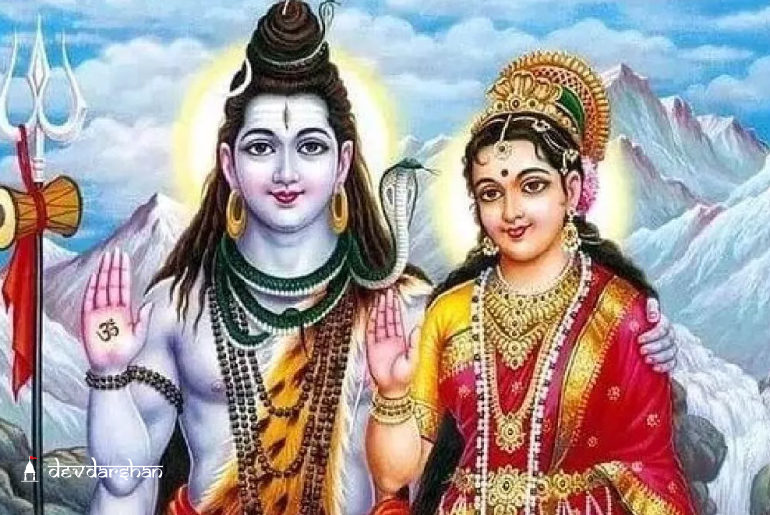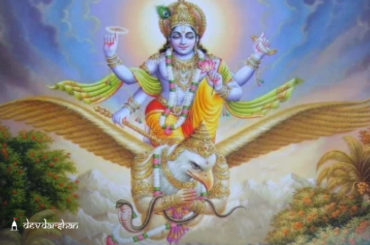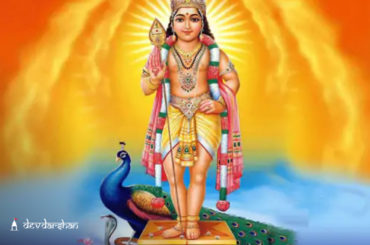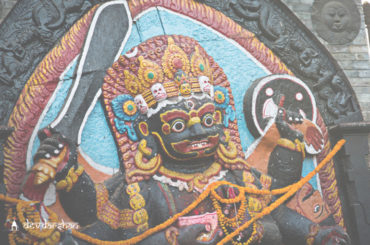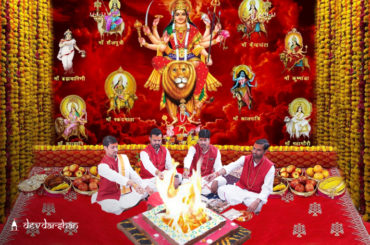Gangaur festival is a Hindu festival celebrated mostly in the Rajasthan state of India. Along with Rajasthan, this festival is also celebrated in Haryana, Uttar Pradesh, Madhya Pradesh, West Bengal, Bihar, Jharkhand, Uttarakhand and Gujarat. This colourful festival starts on the next day of Holi, that is, the first day of the Chaitra month (March-April) of the Hindu calendar and continues for the next 18 days. This year, the festival falls on Friday, March 24, 2023.
The festival of Gangaur is one of the most celebrated festivals to honour Goddess Parvati or Gauri. Both married and unmarried women observe this festival with great enthusiasm. This festival of Rajasthan has a lot of religious importance as Goddess Gauri and Parvati represent perfection and connubial love.
During this festival, both married and unmarried women observe fast and observe prayers to Gauri (Mata Parvati) and Lord Shiva for a happy, contented and blissful married life.
Also Read: Importance of Chaitra Navratri 2023
So now, let’s find out when is Gangaur in 2023. Significance of Gangaur, Puja and Vrat Vidhi and know the auspicious timings in detail.
Gangaur 2023: Date, Muhurat and Timings
This year, Gangaur will be celebrated on Friday, March 24, 2023.
- Tritiya Tithi Starts: 06:20 p.m on March 23, 2023
- Tritiya Tithi Ends: 04:59 p.m on March 24, 2023
Significance of Gangaur
Gangaur is a festival celebrated in the Indian state of Rajasthan, particularly by women. The word ‘Gangaur’ is a combination of two words, ‘Gana’ which means Lord Shiva, and ‘Gauri’ which means Goddess Parvati. The festival is celebrated to honour Goddess Gauri, the embodiment of marital bliss, fertility, and prosperity.
The festival begins on the day after Holi and lasts for 18 days. During this time, women dress up in colourful traditional attire and observe a fast for their husband’s longevity and prosperity. Especially newly married women worship Gan and Gaur and observe a fast for the complete 18 days of the festival. Also, the unmarried girls observe the fast for complete 18 days to find a perfect and lovable husband. According to tradition, married women have to worship the deities only from the third day of the festival. They worship Goddess Gauri by making clay idols and decorating them with clothes, jewellery, and flowers. These idols are then taken out in a procession and immersed in water on the last day of the festival.
Gangaur festival holds great significance for married women in Rajasthan, who pray for the well-being of their husbands and their marital life. It is also a time for unmarried women to pray for a suitable life partner.
Apart from being a religious festival, Gangaur is also a time for socializing and cultural events. The festival showcases the rich cultural heritage of Rajasthan through traditional dances, music, and other forms of art. It is a time for people to come together, forget their differences, and celebrate the spirit of unity and harmony.
Also Read: Importance of MahaMritunjaya Yagya for Long Life
Gangaur Puja Vidhi
- Place clay statues of Lord Shiva (Isar) and Goddess Parvati (Gauri) into the grass and flower-filled baskets.
- While singing Gangaur songs, perform rituals where germinating wheat and barley seeds take place in an earthen pot.
- Newlywed women need to observe an 18-day fast. Unmarried girls can also fast for 18 days and can only eat once every day.
- Unmarried females should march while singing Gangaur songs and wear ‘Ghudlia’ (an earthen pot with lamps inside it) on the evening of the 7th day after Holi.
- Women who are observing the fast need to apply mehndi or henna into beautiful designs on their hands and feet on the second last day. Married ladies must wear traditional dress and jewels their parents provide them as ‘Sinjara’.
- For the last two days, women carry images of Isar and Gauri on their heads in a street parade.
- Thereafter, return to their houses singing Gangaur’s parting songs.
- Processions are carried out to the well or tank on the last day, where women have to break their earthen pots and finally immerse the pictures of Isar and Gauri in the water.
- This marks the end of the fast and Gangaur festival.
- Women return home and break the fast by consuming traditional savoury and sweet dishes like ghevar, kheer, barfi, and others.
- After the puja, sweets are given to the devotees or served as prasad.
Also Read: Puja Rituals of Mangal Gauri Vrat
What Is the Vrat Katha Regarding Gangaur?
The festival is celebrated by both married and unmarried women who seek blessings for a happy and prosperous married life. One of the important rituals of the Gangaur festival is the observance of a fast or vrat by married women. The fast is known as Gangaur vrat or Teej vrat and is observed on the third day of the bright half of the Hindu month of Chaitra (usually in March or April).
The vrat katha or story associated with the Gangaur festival is about a young woman named Gauri, who was an ardent devotee of Lord Shiva. She observed the Gangaur vrat with great devotion and dedication, and as a result, Lord Shiva was pleased with her and appeared before her in the form of her husband. The story goes that Gauri’s father, who was a staunch devotee of Lord Vishnu, did not approve of her marriage to Lord Shiva. He forced her to marry a man of his choice. However, Gauri remained steadfast in her devotion to Lord Shiva and continued to observe the Gangaur vrat. Finally, Lord Shiva was pleased with Gauri’s devotion and appeared before her in the form of her husband. He blessed her with a happy and prosperous married life, and Gauri lived happily ever after with her divine spouse.
This story of Gauri’s devotion to Lord Shiva and the importance of observing the Gangaur vrat is narrated during the Gangaur festival, and it is believed that observing the vrat with dedication and devotion can bring happiness and prosperity in one’s married life.
Also Read: The Story of Lord Shiva and Maa Parvati related to Hariyali Teej
Another version of the Gangaur vrat katha is as follows:
There is yet another interesting Vrat Katha behind the Gangaur festival. According to the vrat katha, once Lord Shiva and Goddess Parvati went on a small trip accompanied by Narad Muni. When they reached the nearby forest, the nearby villagers came to know about them and they got very excited and happy upon the arrival of the divine guest. Women of the lower class cooked food and came with their offerings and worshipped them. Goddess Parvati, Lord Shiva and Narad Muni enjoyed and relished the servings offered by them. Goddess Parvati was extremely happy with the warm welcome and blessed the women by sprinkling the suhagras on them.
After some time, women of the upper class came with their offerings and worshipped Lord Shiva and Maa Gauri. Both Goddess Gauri and Lord Shiva ate all the delicious dishes happily. Once they finished eating, God Shankara asked Gauri what would she bless them as every bit of suhagra was over while sprinkling on the previous group of women. To this, Maa Parvati cut her little finger and sprinkled her blood on this group of women and blessed them with marital bliss.
Since then, the festival of Gangaur has been celebrated with great enthusiasm, dedication, full devotion and fervour by the women to appease Maa Gauri and Lord Shiva and seek their blessings.
Check out various Online Puja and services provided by DevDarshan here and get your bookings done in one click. If you want to know more about Indian culture, Indian Temples, Pujas and festivals, then download the DevDarshan App. Don’t forget to share this blog if you liked.
Disclaimer: Vrat Katha varies depending on region and religious belief.

